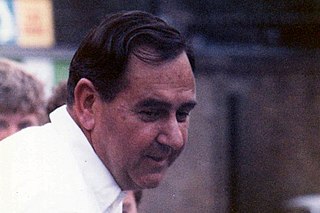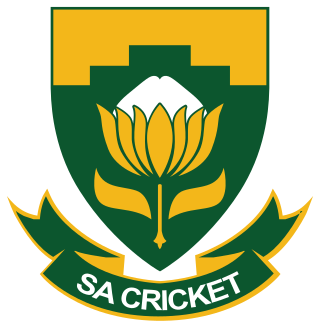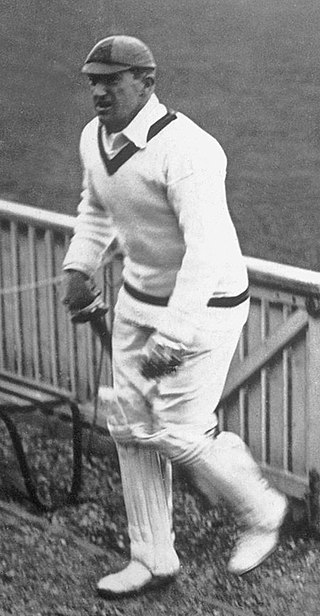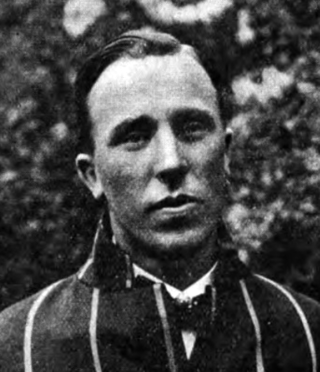Related Research Articles

Michael Colin Cowdrey, Baron Cowdrey of Tonbridge, was an English cricketer who played for Kent County Cricket Club from 1950 to 1976, and in 114 Test matches for England from 1954 to 1975. He was born in Ootacamund, Madras Presidency, British India and died in Littlehampton, West Sussex.
Michael John Knight Smith, better known as M. J. K. Smith or Mike Smith, is an English double international, in cricket and in rugby union.

The South Africa men's national cricket team, also known as the Proteas, represents South Africa in men's international cricket and is administered by Cricket South Africa (CSA). South Africa is a full member of the International Cricket Council (ICC). Its nickname derives from South Africa's national flower, Protea cynaroides, commonly known as the "King Protea".
This is a bibliography of literary and historical works about cricket. The list is sorted by author's name. It is inevitably highly selective. The 1984 edition of E. W. Padwick's A Bibliography of Cricket had more than 10,000 entries.
The 1912 Triangular Tournament was a Test cricket competition played between Australia, England and South Africa, the only Test-playing nations at the time.

Ian Alexander Ross Peebles was a cricketer who played for Oxford University, Middlesex, Scotland and England. After retiring from cricket he became a cricket writer, working as a journalist on The Sunday Times and as the author of many books on cricket.

George Aubrey Faulkner was a South African cricketer who played 25 Test matches for South Africa and fought in both the Second Boer War and World War I. In cricket, he was an all-rounder who was among the best batsmen in the world at his peak and was one of the first leg spin bowlers to use the googly.

Clayvel Lindsay "Jack" Badcock was an Australian cricketer who played in seven Tests from 1936 to 1938.

Sidney James Pegler was a South African cricketer. He emerged following the decline of their googly bowlers Vogler and Schwarz in the early 1910s.
Christopher Warwick Godfrey Bassano is a South African-born cricketer and fly-fisher who lives in Tasmania. His father Brian was a South African sports journalist who wrote several books of cricket history.
M.J.K. Smith captained the English cricket team in Australia in 1965–66, playing as England in the 1965-66 Ashes series against the Australians and as the MCC in their other matches on the tour. The 5-Tests series ended in 1–1 draw. Although they failed to reclaim the Ashes this was not unexpected as the Australian press labelled them the weakest MCC team to arrive in Australia and the bookmakers were giving odds of 7/2 on their winning the series. These views rapidly changed as they set about winning their state matches with exciting, aggressive cricket and by the First Test the odds against them had been reduced to evens. Lindsay Hassett said "other teams from England may have been better technically but none had tried so hard to make the game as interesting as possible". Financially the tour's receipts were much lower than in 1962–63 due to the number of rain-affected games in a wet Australian summer and the general doldrums of the sixties.
1877 was the 91st season of cricket in England since the foundation of Marylebone Cricket Club (MCC).
This article describes the history of South African cricket from its known beginnings until the end of the First World War in 1918.

The South African cricket team toured England in the 1935 season to play a five-match Test series against England.
The tour by the English cricket team in South Africa in 1909–10 was organised by Marylebone Cricket Club (MCC). The team played as MCC in the non-Test fixtures and as England in the five Test matches. They played 14 first-class matches including the Tests, winning 7 times with 3 draws and 4 defeats.
The Australia national cricket team toured South Africa from November 1935 to March 1936 and played a five-match Test series against South Africa. Australia won the Test series 4–0. Australia were captained by Vic Richardson; South Africa by Herby Wade.
The England cricket team toured South Africa under the auspices of the Marylebone Cricket Club from December 1905 to March 1906. There were five Test matches, and seven first-class games against South African provincial teams. While the team won a number of their first-class matches, they also lost several, and South Africa won the Test series 4 to 1.
The Marylebone Cricket Club tour of Australia in 1974-75 under the captaincy of Mike Denness was its sixteenth since it took official control of overseas tours in 1903-1904. The touring team played as England in the 1974–75 Ashes series against Australia, but as the MCC in all other games. In all there were 24 matches; 6 Test matches, 9 other First Class matches, a One Day International, which they won, another one-day game, which they lost, and 8 minor matches.

The South Africa national cricket team toured Australia from November 1910 to March 1911 to play five test matches against Australia. This was the South Africans first tour of Australia and the second tour between the two nations after the Australia tour of South Africa in late 1902.
An English cricket team, under the auspices of Marylebone Cricket Club (MCC), toured Australia from October to December 1935 before going to New Zealand for a three-month tour. It played first-class matches against each of the five mainland state teams, and one match against an Australian XI.
References
- ↑ Bassano, Brian (2001). Aubrey Faulkner. Nottingham: ACS. p. i. Retrieved 12 March 2024.
- ↑ Wisden 2002, p. 1558.
- ↑ Frith, David (7 July 2014). "A moving record". Cricinfo. Retrieved 21 January 2015.